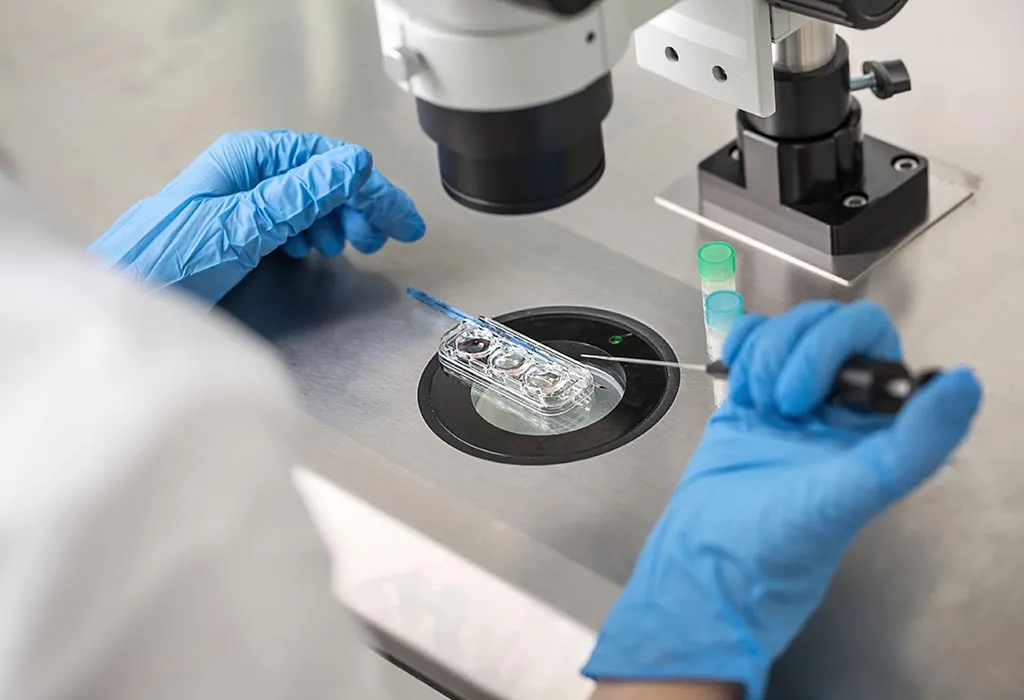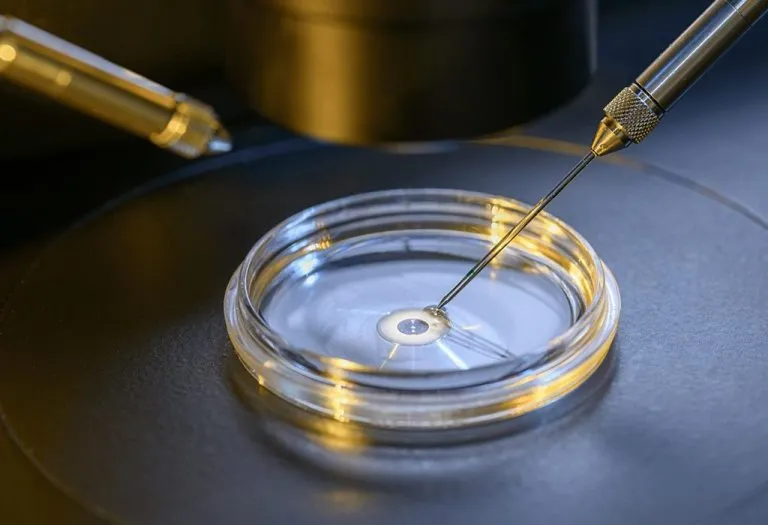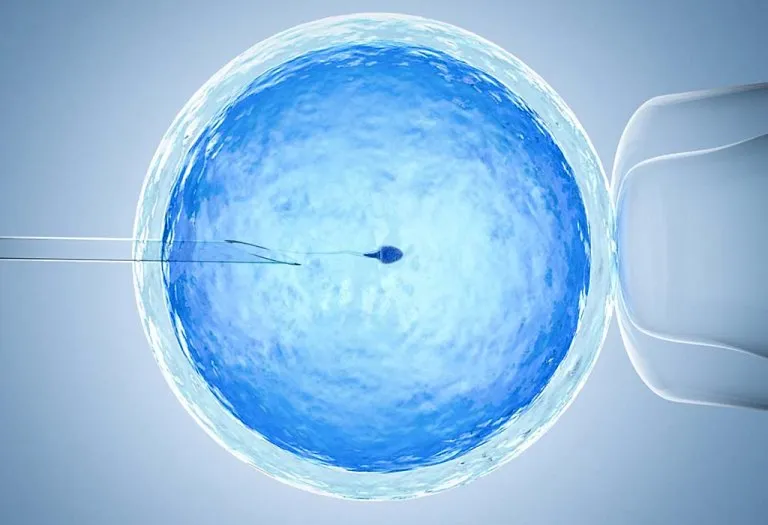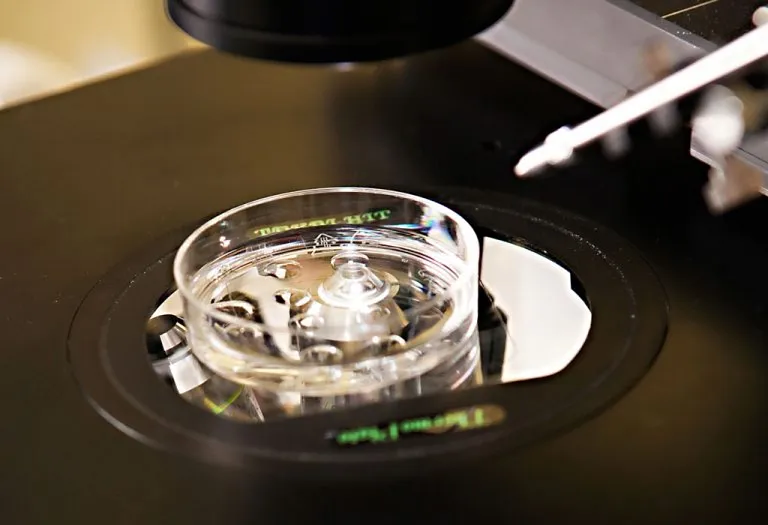A Guide to Zygote Intrafallopian Transfer (ZIFT) – Infertility Treatment
- What Is Zygote Intrafallopian Transfer?
- Who Is Treated With ZIFT?
- ZIFT Procedure
- How Long Does Zygote Intrafallopian Transfer Take?
- Success Rate of ZIFT
- Similarities and Differences Between ZIFT and IVF
- Cost of ZIFT
Zygote Intrafallopian Transfer (ZIFT) is a fertility treatment that may be offered to couples who require help conceiving through assisted reproductive technology (ART). Doctors may recommend this treatment in those cases where the fallopian tubes are blocked, thereby preventing the fertilisation of the sperm with the egg. This procedure, though not as popular as in vitro fertilisation (IVF), is quite similar to it. The only difference is, in ZIFT, the eggs are first fertilised in a lab, and then the fertilised embryo is directly implanted in the fallopian tubes and not the uterus. The fertilised eggs are known as zygotes. Zygotes are embryos that are single-celled as they still haven’t started dividing into further cells. Zygote Intrafallopian transfer is also called “Tubal Embryo Transfer” (TET), as the fertilised egg is directly placed into the fallopian tubes. ZIFT is often compared to another fertility treatment named Gamete intrafallopian transfer (GIFT). Research opines that ZIFT may have a higher success rate than GIFT as doctors have better chances of making sure that the egg fertilizes during the ZIFT procedure.
What Is Zygote Intrafallopian Transfer?
Zygote Intrafallopian transfer is an assisted reproductive technology treatment. This process involves the fertilisation of the eggs with the sperm in the lab. After fertilisation, the egg is laparoscopically placed into one of the fallopian tubes. The fertilised egg then travels through the fallopian tubes to reach the uterus, where it may get implanted, leading to pregnancy. Zygote Intrafallopian Transfer is considered to be a very invasive procedure as it involves laparoscopic surgery, wherein small incisions are made in the abdomen. Therefore, it may not be a preferred option for childless couples.
Who Is Treated With ZIFT?
Doctors may advise ZIFT if other means of treatment have failed. A woman with healthy fallopian tubes or even with one open fallopian tube has more chances of conceiving through the ZIFT process. Zygote intrafallopian transfer cannot be performed if there is significant damage to the tubes, blockage in the tubes or severe uterine impairment. This procedure may be recommended in cases where the sperm count of the man is low, and the woman has problems with ovulation. ZIFT may most effectively help women who are in their early 30s or younger. The success rate of the treatment and its possible health risks to the expecting mother may rise with the increasing age of the woman. If the sperm count of the man is really low, ZIFT may be performed in combination with Intracytoplasmic Sperm Injection(ICSI), a process which enhances the fertilisation rate by directly inserting the egg with a single sperm.
ZIFT Procedure
The stepwise procedure of how ZIFT is performed is as follows:
- Stimulation of the Ovary: Doctors prescribe fertility medications to be taken at the start of the menstrual cycle. This is done so that ovaries get stimulated to release more mature eggs and prevent them from producing the eggs prematurely.
- Development of Follicle: Doctors will then constantly monitor the eggs and the development of follicles through ultrasounds. Blood hormone levels are also regularly checked.
- Collecting the Eggs: On maturing, the eggs are collected by inserting a thin needle into the vaginal wall.
- Fertilisation: The mature eggs are then combined with the husband’s sperm and fertilised in the lab. After a day or so, the successfully fertilised eggs develop into zygotes (one-celled embryos).
- Surgery: The fertilised embryo or zygote is transferred directly to the fallopian tube. This entails a small surgery. The surgery involves making a small incision in the abdomen after administering anaesthesia to the patient. The doctor, by using a laparoscope, then places 1 to 5 zygotes in the fallopian tubes. Any additional zygotes may be frozen for later use.
- Implantation: The zygote journeys down the fallopian tube to reach the uterus, where it may get implanted and develop into a foetus.
- Pregnancy Test: About two weeks after the surgery, the doctor may take a blood test to determine if the procedure has resulted in a successful pregnancy or not.

How Long Does Zygote Intrafallopian Transfer Take?
One procedural cycle of ZIFT, beginning with fertility drugs till the pregnancy test, may take about 4 to 6 weeks. This is because the eggs may take some time to mature. Thereafter, a day is required to collect and fertilize the eggs. Another visit becomes necessary to transfer the fertilised eggs into the fallopian tubes. The surgery is a small one, and the patient may go home the very same day.
Success Rate of ZIFT
The success rate of ZIFT largely depends on factors like the kind of fertility issue a couple has and also on the health and age of the couple seeking the procedure. A woman in her early 30s or even younger may generally produce healthier eggs and, therefore, have a greater rate of success. Studies have established the success rate of the ZIFT process to be between 25% and 40%. This implies that about one in every three ZIFT treatments leads to positive pregnancy results.
Advantages
Certain advantages of ZIFT can be listed as follows:
- The ZIFT process seems more encouraging as the doctor gets to confirm the fertilisation of the eggs before inserting them into the fallopian tubes.
- The process involves a more natural procedure as the embryo passes through the fallopian tubes to reach the uterus by itself.
- According to new research, there is no possible link between fertility medications and cancer.
Disadvantages
On the other hand, ZIFT has a few disadvantages as well. They are as follows:
- ZIFT is an invasive procedure as it involves a small surgery.
- ZIFT process may lead to multiple pregnancies or births, which can pose greater complications during pregnancy like premature birth, miscarriage, or decisions to be made regarding partial abortion, keeping in mind the best interest of the mother’s health.
- ZIFT procedure is an expensive treatment as it entails costly fertility medications, surgery, lab tests and ultrasounds.
- ZIFT requires the doctor to choose the best embryo from the multiple zygotes, which implies discarding the remaining ones. Some couples are not comfortable with this selection process.

Similarities and Differences Between ZIFT and IVF
The similarities between ZIFT and IVF are:
- ZIFT and IVF are artificial fertility treatments which may be offered to couples who are not able to conceive naturally.
- In both methods, embryo culture is done.
- Both processes empower the doctor to choose the best embryos for implantation.
ZIFT procedure is often compared to IVF. The key differences between the two methods are:
- In ZIFT, the fertilised egg is placed in the fallopian tube, from where it journeys to the uterus on its own and in IVF, the fertilised embryo is directly transferred to the uterus.
- ZIFT requires a small invasive surgery, whereas IVF doesn’t need any surgery.
Cost of ZIFT
ZIFT procedure is a costlier treatment when compared to IVF and GIFT. It may prove more expensive, depending on the nature of the fertility problem, the place where the couple resides and whether the insurance policy offers any aid to meet the cost of the treatment. The treatment may cost anything around 1.5 lakhs to 2 lakhs for each cycle of ZIFT.
ZIFT procedure offers childless couples a considerable chance of realising their dream of getting pregnant. It is always advisable to consult your doctor at length for proper guidance and knowledge about each aspect of the treatment before opting for it.
References/Resources:
1. Gamete And Zygote Intrafallopian Transfer (GIFT And ZIFT); NewYork-Presbyterian; https://www.nyp.org/healthlibrary/other-details/gamete-and-zygote-intrafallopian-transfer-gift-and-zift
2. Zygote Intrafallopian Transfer: ZIFT; American Pregnancy Association; https://americanpregnancy.org/getting-pregnant/infertility/zygote-intrafallopian-transfer/
3. Zygote Intrafallopian Transfer; International Encyclopedia of Public Health (Second Edition), 2017; https://www.sciencedirect.com/topics/medicine-and-dentistry/zygote-intrafallopian-transfer
4. Zhu. T; Zygote Intrafallopian Transfer; The Embryo Project Encyclopedia; https://embryo.asu.edu/pages/zygote-intrafallopian-transfer; January 2011
5. Tournaye. H, Devroey. P, Camus. M, Valkenburg. M, et al.; Zygote intrafallopian transfer or in vitro fertilization and embryo transfer for the treatment of male-factor infertility: a prospective randomized trial; Fertil Steril.; PubMed Central; https://pubmed.ncbi.nlm.nih.gov/1633900/; August 1992
Also Read:
Unexplained Infertility
Acupuncture for Infertility
Primary Infertility – Causes & Treatment
Assisted Reproductive Technology (ART) – Infertility Treatment
Was This Article Helpful?
Parenting is a huge responsibility, for you as a caregiver, but also for us as a parenting content platform. We understand that and take our responsibility of creating credible content seriously. FirstCry Parenting articles are written and published only after extensive research using factually sound references to deliver quality content that is accurate, validated by experts, and completely reliable. To understand how we go about creating content that is credible, read our editorial policy here.























